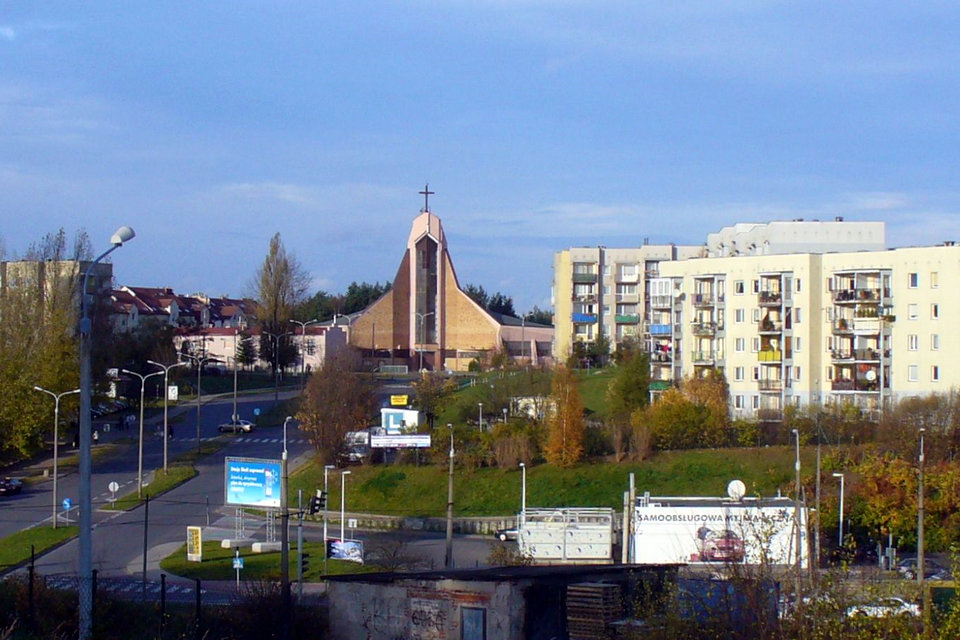Gdynia Architecture


Gdynia is a young city, so it has no buildings representing architectural styles such as Gothic, Renaissance or Baroque. Shaped in the interwar period, Śródmieście has many preserved or rebuilt buildings. They are examples of modernism like the PLO office building. Modernism was characterized by white elevations of buildings, which meant that pre-war Gdynia was called the “white city”. Located in the City Center, the building of the Bank of Poland presents academic classicism. This style, existing in the city in the 1920s, externalises decorations with columns,cornices, pilasters and tympanums. The backbone of the central part of the city, around which pre-war buildings were erected, were 10 Lutego and Świętojańska Streets. Residential villas in Kamienna Góra are an example of historicism in a variety of manor style.
During the World War II, the development of the center did not suffer any serious damage. Port buildings were destroyed, as a result of allied raids. They were the result of the invader’s location of the Kriegsmarine base in Gdynia.
The 1970s and 1980s saw the emergence of blocks of flats from a large slab. Most of them were located in Karwiny, Chyloni, Oksywie and Obłuż and in a lesser intensity in other districts of the city. Currently, most of them have been insulated and their façades have been renovated.
After 1989, the city is erected with architectural objects that distinguish them from the surroundings. An example is the Batory Shopping Center built in 1998, whose side wing has the shape of a ship’s hull. The modern architecture is also part of the sports and entertainment hall with the appearance of an earth mound with a roof supported by a steel arched beam.
The future is drawn in plans for the revitalization of Międzytorze along with a change in its character. There are also plans for the expansion of the yacht pool and the transformation of the vicinity of the Musical Theater into the cultural center of Gdynia.
Monuments and tourist attractions
The oldest building is the 13th-century church. St. Michael the Archangel on Oksywie. It functioned as the only temple for the residents of the village of Oksywie and for a long time the only object that was created in historical times. Buildings, which now have the status of monuments, began to appear in the nineteenth century in Orłowo and Mały Kack. The granting of Gdynia’s city rights and its extension brought about the appearance of monuments, constituting today the majority of buildings of this type. They included all of Śródmieście, villa buildings on Kamienna Góra or Orłowo. They are entered on the list of immovable monuments. As a result, most of them have been and are being renewed.
Among the non-monumental buildings in Gdynia, you can find monuments most often located in the city center. Monuments of Joseph Conrad at the end of Kosciuszko Square or both Monuments of the Victims of December 1970 are the monuments most visible to residents and tourists. An attraction for tourists is also an observation deck on the telecommunications tower on Donas Mountain in the Dąbrowa district. Until recently, the observation tower was located near the College of Administration and Business.
Skyscrapers
The area of Gdynia is the location of several buildings recognized as skyscrapers. In the case of the city, the majority are part of larger complexes, which serve as a service for high-rise residents. The highest of them is the Sea Towers team, which was completed in February 2009. It is the tallest residential building on the southern coast of the Baltic Sea. The upper tower has 141.6 m (36 storeys ) and the lower tower is 91 m (28 storeys). The whole building was located near Kosciuszko Square. Two neighboring residential skyscrapers tower above the Witomino area. Within the Witawa Family Centera smaller and smaller 14-storey building was constructed. On its opposite side is a wider and higher 15-storey structure. The whole structure for housing was built in 2003. In Redłowo, the residential and commercial complex includes Redłowska Kaskada, put into use in 2006. This 17-storey building was designed with a cubist shape in mind. Also located in Redłowo, completed in 2002 Redłowska A slope. Both buildings in Redłowo are intended for housing purposes. For housing and commercial purposes, the 15-storey Chylonia Department Store is intended, built in the early 90s of the twentieth century. It is the only building in Gdynia with a large slab, which has more than 11 floors, of which the first four together with the ground floor are occupied by a department store. The only office building in the described category is the Baltic Business Center. It is located in the vicinity of other office buildings within the Forest Plots. The 14-storey has been performing its function since 1996. In the PRL era, near the Musical Theater, a 12-storey Gdynia Hotel was created. The reconstruction of the main building and the expansion of its surroundings are planned.
Source from Wikipedia